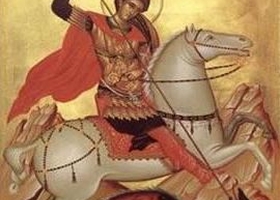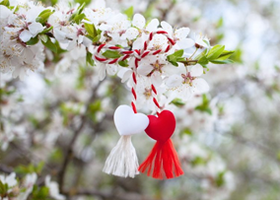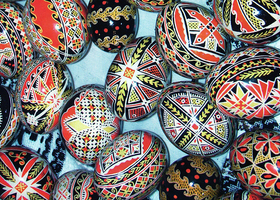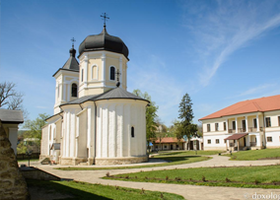Mărțișor
March 1st signifies the beginning of spring, but for Romanians it is closely linked to the tradition of offering mărțișor (an object made from two intertwined red and white strings with hanging tassel), an ancient symbol celebrating the change of seasons and the rebirth of nature.
The mărțișor, given as a gift on March 1st each year, is a kind of symbolic calendar, made of a two-colored string, which gathers the days, weeks and months of the year into two seasons: winter and summer.
March 1st signifies the beginning of spring, but for Romanians it is closely linked to the tradition of offering mărțișor (an object made from two intertwined red and white strings with hanging tassel), an ancient symbol celebrating the change of seasons and the rebirth of nature. The mărțișor, given as a gift on March 1st each year, is a kind of symbolic calendar, made of a two-colored string, which gathers the days, weeks and months of the year into two seasons: winter and summer. The mărțișors bring good luck. Now common in villages and towns, the mărțișor is made from two twisted strands of wool or silk, one white and one red, to which a handmade object is attached. It is offered to everyone on the first day of spring, to be worn on the chest for one or more days. It is said that mărțișors bring good luck and happiness. Therefore, other symbols of good luck, such as four-leaf clovers, horseshoes, baskets or hearts, are added to this string, tied in the form of a bow. How old is the tradition of the "Mărțișor". According to archaeological research carried out in our country, amulets similar to the mărțișor have been found dating back about 8,000 years.
These were represented by perforated pebbles in white and red, worn around the neck as necklaces. It seems that the two colours were chosen because red was associated with blood, a reference to the sacrificial rituals practiced at the beginning of spring, and white symbolized the purity of snow, ice and clouds. Put together, the two expressed the desire to say goodbye to winter and welcome spring as a symbol of the return to life. Another interpretation of the choice of the two colours is that red symbolizes both blood and the sun, representing life, and thus the woman, while white, reflecting the clarity of the waters, is specific to the wisdom of man. The string of the mărțișor would therefore represent the harmonious intertwining of the two.


 ro
ro
 ru
ru




